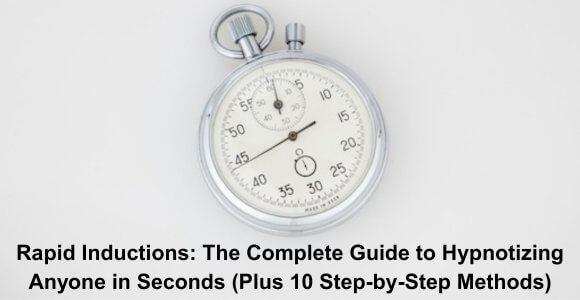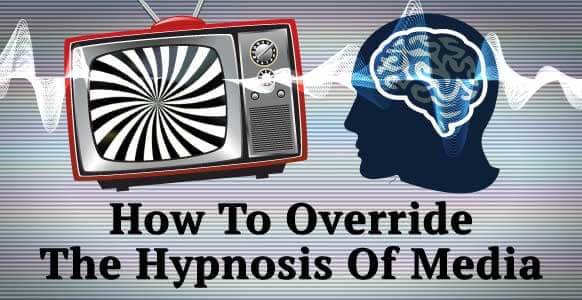![[ARTICLE] Can Hypnosis Be Measured? What the Latest Brain Imaging Studies Reveal [ARTICLE] Can Hypnosis Be Measured? What the Latest Brain Imaging Studies Reveal](https://hypnosistrainingacademy.com/wp-content/uploads/2025/04/can-hypnosis-be-measured-brain-imaging-research-582x300.png)
For decades, hypnosis has been a subject of fascination and controversy. While it has been widely used in therapeutic and medical settings, skeptics have often questioned whether hypnosis is truly an altered state of consciousness or simply a placebo effect.
However, new advances in neuroscience and brain imaging technology have provided groundbreaking insights into how hypnosis affects the brain—and the results might surprise you.
The Science of Hypnosis: What Happens in the Brain?
Traditionally, hypnosis has been defined as a state of focused attention, heightened suggestibility, and deep relaxation. While subjective reports from hypnotized individuals suggest profound changes in perception and experience, researchers have long sought objective ways to measure what occurs in the brain during hypnosis.
Recent studies using functional magnetic resonance imaging (fMRI) and electroencephalography (EEG) have begun to shed light on the neurological basis of hypnosis.
These imaging techniques allow scientists to observe real-time changes in brain activity, helping to determine whether hypnosis is a distinct state of consciousness or simply a variation of normal wakefulness.
fMRI Studies: Hypnosis Alters Brain Connectivity
Recent fMRI studies have confirmed that hypnosis alters functional connectivity in the brain. A 2024 study from the University of Zurich found that hypnosis leads to increased communication between posterior regions (such as the precuneus and occipital cortices), while frontal areas become less dominant. This shift supports the idea that hypnosis involves a decoupling from executive control and an enhanced focus on internal imagery and sensations.
Another compelling study on hypnosis and brain activity was conducted by Dr. David Spiegel and his team at Stanford University. Their research, published in the journal Cerebral Cortex, used fMRI scans to compare brain activity in highly hypnotizable individuals during hypnosis and normal wakefulness.
The study found three key changes in brain function during hypnosis:
- Reduced Activity in the Dorsal Anterior Cingulate Cortex: This region of the brain is responsible for cognitive control and decision-making. The reduced activity suggests that hypnotized individuals are less likely to question or analyze suggestions, allowing them to fully engage with hypnotic experiences.
- Increased Connectivity Between the Dorsolateral Prefrontal Cortex and the Insula: This suggests a heightened mind-body connection during hypnosis, which may explain why hypnosis is so effective for pain management and behavioral modification.
- Decreased Connectivity Between the Prefrontal Cortex and the Default Mode Network (DMN): The DMN is responsible for self-reflection and the ‘inner voice’ that critiques experiences. Reduced connectivity here suggests that hypnotized individuals experience a diminished sense of self-consciousness, making them more open to suggestions.
These findings confirm that hypnosis is not simply a placebo or a relaxed state—it produces measurable changes in the brain that differ from normal waking consciousness.
EEG Studies: Hypnosis and Brainwave Activity
Another method used to measure hypnosis is EEG, which records electrical activity in the brain.
EEG research has shown that hypnosis is associated with increased theta and alpha brainwaves—patterns linked to creativity, internal focus, and relaxation.
A 2024 study published in Cortex revealed increased frontoparietal connectivity and a suppression of beta and gamma activity during hypnosis, reflecting reduced cognitive control and heightened unconscious processing.
Additional EEG studies have shown that hypnosis produces distinct changes in brainwave patterns:
- Increased Alpha and Theta Waves: These brainwaves are typically associated with deep relaxation, meditation, and creativity. During hypnosis, individuals display heightened alpha and theta wave activity, suggesting a shift into a trance-like state.
- Reduced Beta Waves: Beta waves are associated with active thinking and problem-solving. A reduction in beta wave activity during hypnosis indicates a decrease in critical thinking and an increase in suggestibility.
- Synchronization of Brain Hemispheres: Some studies have found that hypnosis enhances communication between the left and right hemispheres of the brain, allowing for greater cognitive flexibility and responsiveness to suggestions
These EEG findings support the idea that hypnosis involves a distinct neural state, rather than just relaxation or placebo effects.
Hypnosis and Pain Perception: A Closer Look
One of the most well-documented applications of hypnosis is in pain management. Research has shown that hypnosis can significantly reduce pain perception, even in individuals who do not respond to conventional pain treatments.
A study by Dr. Pierre Rainville at the University of Montreal used PET scans to examine brain activity in individuals undergoing hypnosis for pain relief. The results revealed that hypnosis alters activity in pain-processing regions of the brain, particularly the anterior cingulate cortex and the somatosensory cortex.
Participants who underwent hypnotic analgesia showed:
- Reduced activation in pain-related brain regions
- Increased activity in brain areas associated with cognitive control of pain
- A significant reduction in subjective pain ratings
These findings suggest that hypnosis does not just alter a person’s perception of pain but actually changes the way the brain processes pain signals.
Can Everyone Experience Hypnosis? The Role of Hypnotizability
While hypnosis has measurable effects on the brain, not everyone is equally susceptible to it. Research suggests that hypnotizability varies from person to person, with approximately 10-15% of the population being highly hypnotizable, while 10-15% show low responsiveness. Most people fall somewhere in between.
Studies using fMRI have found structural and functional differences in the brains of highly hypnotizable individuals. For example, a study published in Nature found that individuals with high hypnotizability had greater connectivity between brain regions involved in attention, awareness, and executive function.
Interestingly, research suggests that hypnotizability may be partly genetic, meaning that some people are naturally more predisposed to entering hypnotic states than others.
Practical Applications of Hypnosis Research
The ability to measure hypnosis through brain scanning technology has led to a growing acceptance of hypnosis in various fields, including:
1. Medical Hypnosis
- Acute and chronic pain, including back pain, arthritis, and neuropathic pain
- Surgical pain and recovery, reducing the need for anesthesia and improving healing outcomes
- Dental anxiety and pain, especially useful for patients with needle phobia or severe dental fear
- Irritable Bowel Syndrome (IBS) – gut-directed hypnotherapy is a well-researched and effective treatment recognized by the American College of Gastroenterology
- Fibromyalgia, helping reduce pain sensitivity and improve quality of life
- Cancer-related symptoms, such as nausea, fatigue, and anxiety from chemotherapy and radiation
- Migraine and tension headaches, by addressing stress-related triggers and pain perception
- Menopausal symptoms, including hot flashes, night sweats, and sleep disturbances
- Skin conditions, such as eczema, psoriasis, and warts, by influencing immune responses and reducing stress
- High blood pressure, through relaxation and stress reduction techniques
- Asthma and other respiratory conditions, where stress is a contributing factor
- Sleep disorders, including insomnia and parasomnias (like sleepwalking or night terrors)
- Tinnitus, by changing the way the brain responds to persistent sound stimuli
- Phantom limb pain, by helping the brain reinterpret the missing limb’s signals
2. Mental Health Treatment
- Anxiety disorders, including generalized anxiety, social anxiety, and panic attacks
- Post-Traumatic Stress Disorder (PTSD), by safely accessing and reprocessing traumatic memories
- Phobias such as fear of flying, heights, spiders, or public speaking
- Depression, especially when linked to negative self-talk or unresolved emotional patterns
- Obsessive-Compulsive Disorder (OCD), by helping reduce compulsive urges and intrusive thoughts
- Insomnia and other sleep disorders, through guided relaxation and unconscious reprogramming
- Dissociative disorders, by helping patients reintegrate dissociated aspects of identity and memory
- Performance-related anxiety, such as test anxiety, writer’s block, or stage fright
3. Behavioral Change
- Smoking addiction, by eliminating unconscious triggers and reinforcing motivation to quit
- Overeating and emotional eating, aiding in portion control, craving reduction, and body image issues
- Alcohol and drug dependency, as a supportive therapy in recovery and relapse prevention
- Compulsive behaviors, such as nail-biting, hair pulling (trichotillomania), and skin picking
- Chronic procrastination and self-sabotage patterns that prevent goal achievement
- Unhealthy sleep habits, including night eating, bedtime resistance, and inconsistent routines
- Fear-based avoidance behaviors, like avoiding medical care or social events due to irrational fears
4. Performance Enhancement
- Performance anxiety in athletes, musicians, public speakers, and exam-takers
- Fear of failure or fear of success, which can lead to avoidance or self-sabotage
- Mental blocks in learning, such as math anxiety, test-taking panic, or reading difficulties
- Low self-confidence or imposter syndrome that affects career progression or creative expression
- Stress and burnout, especially in high-pressure careers or competitive environments
- Distractions and lack of focus, by enhancing concentration and present-moment awareness
Conclusion: Hypnosis is Measurable and Real
For years, hypnosis was misunderstood and dismissed as mere suggestion or placebo. However, modern neuroscience has provided clear, measurable evidence that hypnosis induces distinct brain changes, affecting perception, pain processing, and cognitive function.
Brain imaging studies using fMRI, PET, and EEG have shown that hypnosis alters brain activity in predictable and reproducible ways. These findings not only validate hypnosis as a legitimate therapeutic tool but also open the door for further research into how it can be used to enhance mental and physical health.
As technology continues to evolve, we may soon understand even more about the brain’s ability to enter hypnotic states—and how we can harness this knowledge to improve lives.
Interested in learning how hypnosis can be applied in your field? Explore our hypnosis training programs and start your journey today!








![[ADVANCED GUIDE] How To Master Hypnotic Regression Therapy - Part I: Essential Principles To Profoundly Transform Your Subject’s Emotional Trauma [ADVANCED GUIDE] How To Master Hypnotic Regression Therapy - Part I: Essential Principles To Profoundly Transform Your Subject’s Emotional Trauma](https://hypnosistrainingacademy.com/wp-content/uploads/2016/09/hypnotic-regression-therapy-essential-principles.jpg)


![Yogic Breathing For Hypnosis: 3 Easy Techniques To Ground & Relax Your Clients Before Inducing A Hypnotic Trance [Includes Infographic] Yogic Breathing For Hypnosis: 3 Easy Techniques To Ground & Relax Your Clients Before Inducing A Hypnotic Trance [Includes Infographic]](https://hypnosistrainingacademy.com/wp-content/uploads/2019/05/yogic-breathing-for-hypnosis.jpg)
